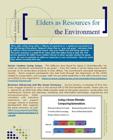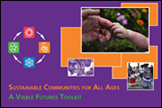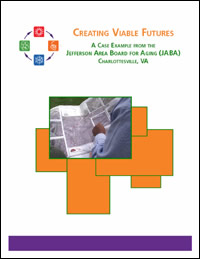Community Planning for Boomers
Based on the synergistic intergenerational approach showcased in the original Viable Futures Toolkit, we provide more concrete guidance for communities to plan for the aging population during tight times in ways that benefit all generations. These ideas can be adapted for all kinds of communities.
Click to download your free copy!
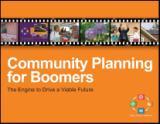
Viable Futures Toolkit
Provides concrete guidance for planning, policy-making, and programming to plan for an aging population in ways that benefit all generations. Toolkit includes a workbook; community checklist; issue briefs on health, housing, lifelong learning, land use, transportation, and more; tips for coalition building, a guide for resource development, and a user’s guide.
Click to download your free copy!
Viable Futures Training Guide
Bring allies to the table! The training guide gives you a systematic approach to help others understand the point of view of the Viable Futures materials and how to use them most effectively in your own community.
Click to download your free copy!
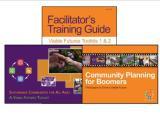 Viable Futures Case Studies – User’s Guide
Click to download your free copy!
Charlottesville Case Study #1 – Creating a Viable Future
A Case Study of the Jefferson Area Board for Aging, Charlottesville, VA, the focus is on how an Area Agency on Aging employs the point of view of the Viable Futures Toolkit to better the lives of children, youth, and families over the course of fulfilling its mission to serve elders in the community.
Click to download your free copy!
Viable Futures Case Studies – User’s Guide
Click to download your free copy!
Charlottesville Case Study #1 – Creating a Viable Future
A Case Study of the Jefferson Area Board for Aging, Charlottesville, VA, the focus is on how an Area Agency on Aging employs the point of view of the Viable Futures Toolkit to better the lives of children, youth, and families over the course of fulfilling its mission to serve elders in the community.
Click to download your free copy!
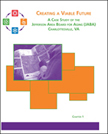 Charlottesville Case Study #2 – From Gray to Green: One Aging Organization’s Journey Toward Sustainability
Details how an Area Agency on Aging employs the point of view of the Viable Futures Toolkit to become more intentional in environmental preservation over the course of fulfilling its mission to serve elders in the community.
Click to download your free copy!
Charlottesville Case Study #2 – From Gray to Green: One Aging Organization’s Journey Toward Sustainability
Details how an Area Agency on Aging employs the point of view of the Viable Futures Toolkit to become more intentional in environmental preservation over the course of fulfilling its mission to serve elders in the community.
Click to download your free copy!
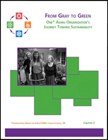 Arizona case study – A Learning Laboratory for Bringing Generations Together
A case study of the Arizona Community Foundation’s strategies that address multiple community needs through investments in work that builds communities for all ages.
Click to download your free copy!
Arizona case study – A Learning Laboratory for Bringing Generations Together
A case study of the Arizona Community Foundation’s strategies that address multiple community needs through investments in work that builds communities for all ages.
Click to download your free copy!
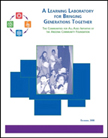 Portland, Oregon, case study – The Hope in Hope VI
Shows how the New Columbia neighborhood used the Viable Futures Toolkit, step-by-step, to build a more cohesive community amidst a collection of new houses whose residents come from 22 different countries.
Click to download your free copy!
Portland, Oregon, case study – The Hope in Hope VI
Shows how the New Columbia neighborhood used the Viable Futures Toolkit, step-by-step, to build a more cohesive community amidst a collection of new houses whose residents come from 22 different countries.
Click to download your free copy!
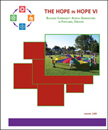 12 Lessons Learned
Reveals 12 key lessons that communities piloting the Viable Futures Toolkit and its point of view learned in the process of their work. This study allows you to learn from the steps of pioneers and hear about what they’d do differently next time.
Click to download your free copy!
12 Lessons Learned
Reveals 12 key lessons that communities piloting the Viable Futures Toolkit and its point of view learned in the process of their work. This study allows you to learn from the steps of pioneers and hear about what they’d do differently next time.
Click to download your free copy!
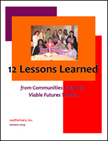
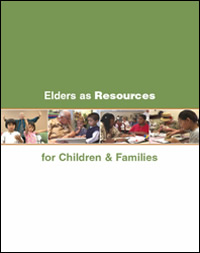 su_service title {
font-weight: normal;
}
su_service title {
font-weight: normal;
}

Not New, But Worth Revisiting Now!
Elders as Resources for the Environment Many older adults bring either a lifetime of experience or a new-found commitment to the well-being of the planet. Research shows that as “gray and green” volunteers help to address critical environmental issues, their own health and well-being improves. The green economy is a good fit for many skills that elders bring to later life. And service agencies for elders have a better chance to retain younger workers by going green. Be sure to capitalize on elders as resources in your community! Click to download your free copy! Please take a look at strategic documents we have prepared for Area Agencies on Aging: Alexandria, VA Strategic Plan 2013-2017, The Alexandria of Our Future: A Livable Community for All Ages: Download the Alexandria, VA Adult Services Strategic Plan Frederick County MD Needs Assessment of the Aging Population, 2013: Download the Frederick County Needs AssessmentThe Original Viable Futures Toolkit and Related Products
Our Viable Futures products and services get the most from limited resources because they: Approach solutions to aging issues with other generations in mind
Approach solutions to aging issues with other generations in mind
Use available budgets for aging in ways that can also address other community issues
Promote coordinated planning across the organizations, governmental units, and commissions doing the work
Recognize the revenue-generating value of aging services and advance ways to diversify revenue sources
 Viable Futures Case Studies – User’s Guide
Click to download your free copy!
Charlottesville Case Study #1 – Creating a Viable Future
A Case Study of the Jefferson Area Board for Aging, Charlottesville, VA, the focus is on how an Area Agency on Aging employs the point of view of the Viable Futures Toolkit to better the lives of children, youth, and families over the course of fulfilling its mission to serve elders in the community.
Click to download your free copy!
Viable Futures Case Studies – User’s Guide
Click to download your free copy!
Charlottesville Case Study #1 – Creating a Viable Future
A Case Study of the Jefferson Area Board for Aging, Charlottesville, VA, the focus is on how an Area Agency on Aging employs the point of view of the Viable Futures Toolkit to better the lives of children, youth, and families over the course of fulfilling its mission to serve elders in the community.
Click to download your free copy!
 Charlottesville Case Study #2 – From Gray to Green: One Aging Organization’s Journey Toward Sustainability
Details how an Area Agency on Aging employs the point of view of the Viable Futures Toolkit to become more intentional in environmental preservation over the course of fulfilling its mission to serve elders in the community.
Click to download your free copy!
Charlottesville Case Study #2 – From Gray to Green: One Aging Organization’s Journey Toward Sustainability
Details how an Area Agency on Aging employs the point of view of the Viable Futures Toolkit to become more intentional in environmental preservation over the course of fulfilling its mission to serve elders in the community.
Click to download your free copy!
 Arizona case study – A Learning Laboratory for Bringing Generations Together
A case study of the Arizona Community Foundation’s strategies that address multiple community needs through investments in work that builds communities for all ages.
Click to download your free copy!
Arizona case study – A Learning Laboratory for Bringing Generations Together
A case study of the Arizona Community Foundation’s strategies that address multiple community needs through investments in work that builds communities for all ages.
Click to download your free copy!
 Portland, Oregon, case study – The Hope in Hope VI
Shows how the New Columbia neighborhood used the Viable Futures Toolkit, step-by-step, to build a more cohesive community amidst a collection of new houses whose residents come from 22 different countries.
Click to download your free copy!
Portland, Oregon, case study – The Hope in Hope VI
Shows how the New Columbia neighborhood used the Viable Futures Toolkit, step-by-step, to build a more cohesive community amidst a collection of new houses whose residents come from 22 different countries.
Click to download your free copy!
 12 Lessons Learned
Reveals 12 key lessons that communities piloting the Viable Futures Toolkit and its point of view learned in the process of their work. This study allows you to learn from the steps of pioneers and hear about what they’d do differently next time.
Click to download your free copy!
12 Lessons Learned
Reveals 12 key lessons that communities piloting the Viable Futures Toolkit and its point of view learned in the process of their work. This study allows you to learn from the steps of pioneers and hear about what they’d do differently next time.
Click to download your free copy!

Additional Earlier Work
Elders as Resources for Children & Families Prepared for the Annie E. Casey Foundation. Catalogs policies and programs that engage elders in improving the lives of vulnerable children and families. Click to download your free copy! su_service title {
font-weight: normal;
}
su_service title {
font-weight: normal;
} 
